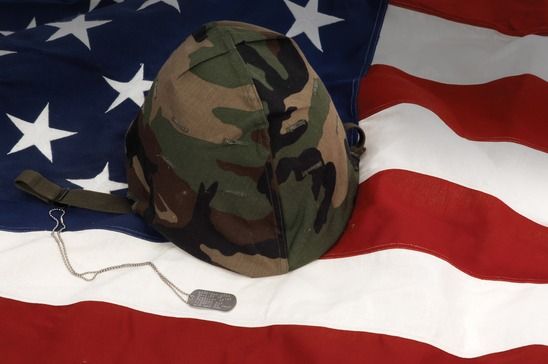

Traumatic events change lives. They are not just memorable events like being disappointed in getting a bad grade in school, not getting a promotion at work or not getting the gift you really wanted for your birthday. A truly traumatic event alters the way you view life, how you approach daily activities and how you relate to others. Trauma changes the way the brain works. It short-circuits the normal routes of neurons and shows up in brain-scans.
Learn what post traumatic stress disorder (PTSD) is and how massage therapy can help retrain the mind-body connection to react in healthier ways.
When Does Trauma Become Post Traumatic Stress Disorder?
PTSD is a relatively new term for an old illness. It is usually used as a term connected to military service, but is often used in the civilian world as well. In the past it was referred to as shell-shock, battle fatigue and soldier’s heart when it referred to those coming home from war after seeing and experiencing horrific events. Some mental health professionals say it is actually a normal reaction to abnormal events.
Many individuals, after seeing or experiencing a life-altering event will experience some kind of extreme trauma. Most will recover. It is only considered a disorder if the symptoms last for more than three months. For those affected, PTSD may change them for the rest of their lives.
It is estimated that about 60 percent of men and 50 percent of women in the United States experience at least one traumatic event in their lifetime. Of those, about 8 percent of men and 20 percent of women will develop PTSD. This means that about 5.2 million adults will have PTSD in any given year. In some cases, like combat or sexual assault (both prevalent in the military), the percentages are actually much higher.
The initial traumatic event often results in Acute Stress Disorder (ASD). It usually occurs within the first month after the trauma. The response is fear, helplessness and horror. Other symptoms, similar to PTSD, are avoidance and hyperarousal or hypervigilance. With ASD, the symptoms fade over time, usually within one to three months. ASD can evolve into PTSD when those symptoms last and even intensify. Someone with PTSD will also often dissociate, experience emotional numbing and have problems in relating to others. Many people diagnosed with PTSD also suffer with concurrent difficulties, such as severe depression, high anxiety, panic attacks and more. They may experience recurrent nightmares or have flashbacks of the traumatic event.
Can Massage Really Help?
The first thing a massage therapist, or any health professional, must do is to have a good understanding of what PTSD is. If you live in an area where there are military bases, or a place where there are a lot of veterans, there is a good chance that you may have a high percentage of veterans as clients.
Most massage clients are women and there are more women in the military now than 30 years ago. Although only official recently, women have also served in combat and have seen or experienced many of the same traumatic events as their male counterparts. Sexual assault ranks very high among female troops. More than 20 percent of women reported a sexual assault while in the military and the Department of Defense (DoD) estimates that only about 10 percent are actually reported. The DoD figures for 2012 estimate that 26,000 men and women were sexually assaulted – up more than 35 percent from 2011.
What this all means is, if you live and/or work in an area with a high concentration of veterans and your clients come from this population, there is a good chance they may have experienced some form of intense trauma whether from combat or sexual assault.
Massage alone may not help heal PTSD, but as part of an overall healthcare plan it can help reduce symptoms and allow the veteran to reconnect the mind and body in a healthy way.
If you know for sure your client has PTSD – if they have been diagnosed and undergoing treatment – you need to be aware of certain things in order to create the best and safest massage session. It may be necessary to start slow, perhaps with chair massage, where the client is clothed and the session is short. This allows for the client to gain trust and get familiar with what safe touch feels like. This is the case for combat veterans who may have been physically injured, or see one of their buddies hurt or killed. Physical touch may be painful or bring back painful memories. This is especially true for those who have experienced sexual trauma or physical abuse.
If you have a client who cannot yet be touched, Reiki or Therapeutic Touch may be a hands-off option for the first few sessions. The Army has used Reiki as well as other holistic therapies with some success at the Warrior Resilience Center in Fort Hood, Texas on soldiers returning from Iraq and Afghanistan with some success.
Recommended Study:
Chair Massage Fundamentals
Mastering Chair Massage
MPU: Post Traumatic Stress Disorder (PTSD) & Massage
Reiki: An Introduction











